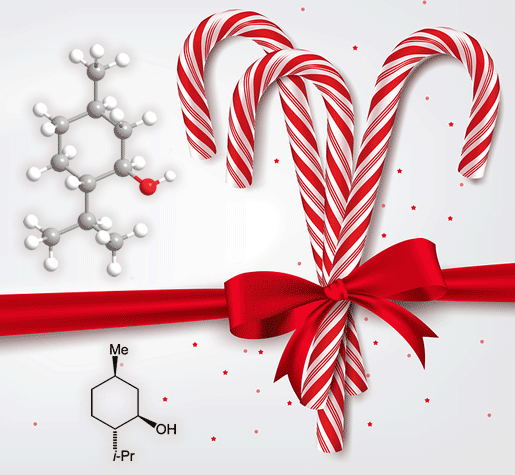What molecule am I?

Menthol is a substituted cyclohexanol that is familiar to many as the main constituent of mint. It occurs in peppermint and other mint oils. (–)-Menthol is far more common in nature than its (+)- enantiomer. The molecule has three stereogenic centers, leading to other isomers known as isomenthol, neomenthol, and isoneomenthol.
Racemic synthetic menthol is made by hydrogenating the phenolic compound thymol. The hydrogenation produces all of the stereoisomers; (–)-menthol is isolated by esterification, fractional crystallization, and hydrolysis.
Menthol is a component of a wide range of over-the-counter remedies. It triggers cold-sensitive receptors in human tissues, making it useful in dental products, sunburn medications, shaving creams, and decongestants. It is a flavoring agent in foods such as ice cream, tea, candy, and liqueurs.
So while you suck on your holiday candy cane, think good thoughts about (–)-menthol and its seven isomeric cousins.

Learn more about this molecule from CAS, the most authoritative and comprehensive source for chemical information.
Molecule of the Week needs your suggestions!
If your favorite molecule is not in our archive, please send us a message. The molecule can be notable for its current or historical importance or for any quirky reason. Thank you!
Stay Ahead of the Chemistry Curve
Learn how ACS can help you stay ahead in the world of chemistry.

